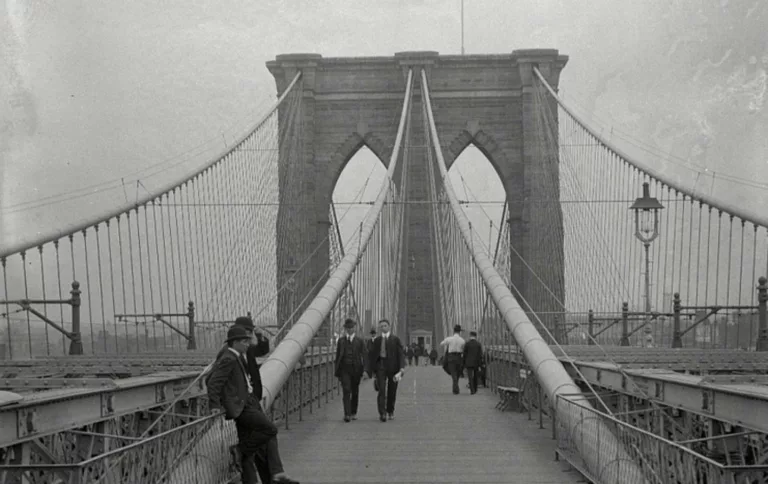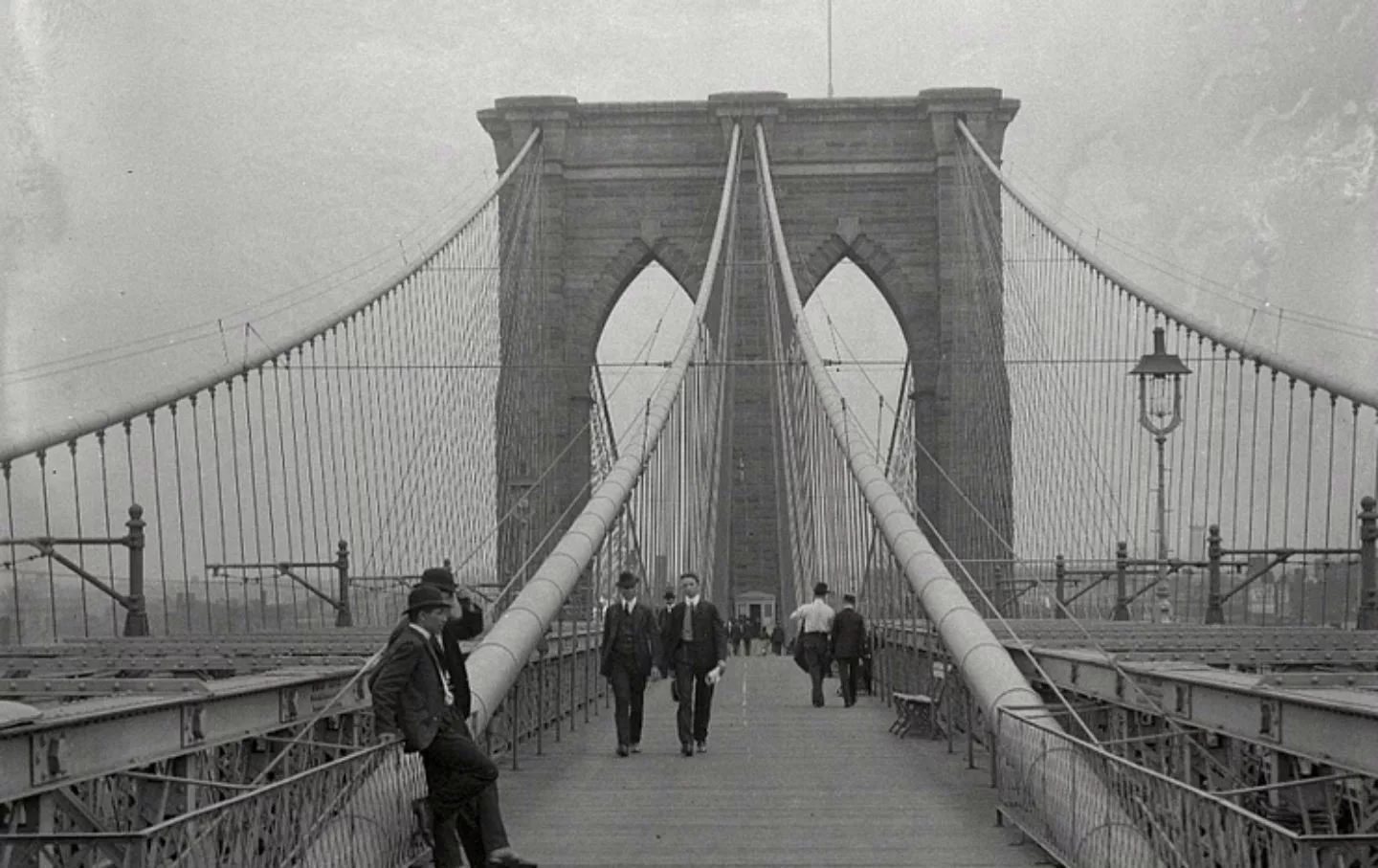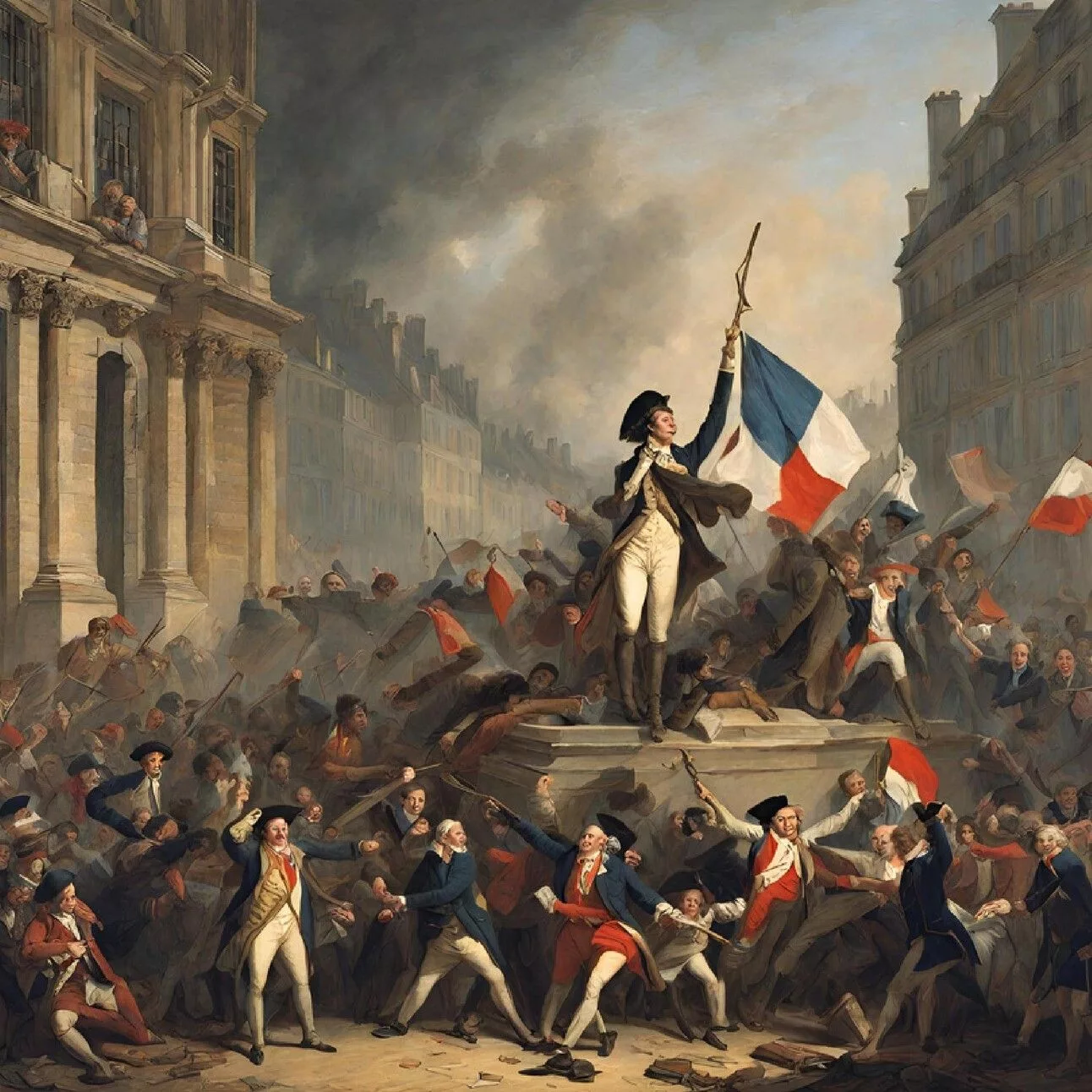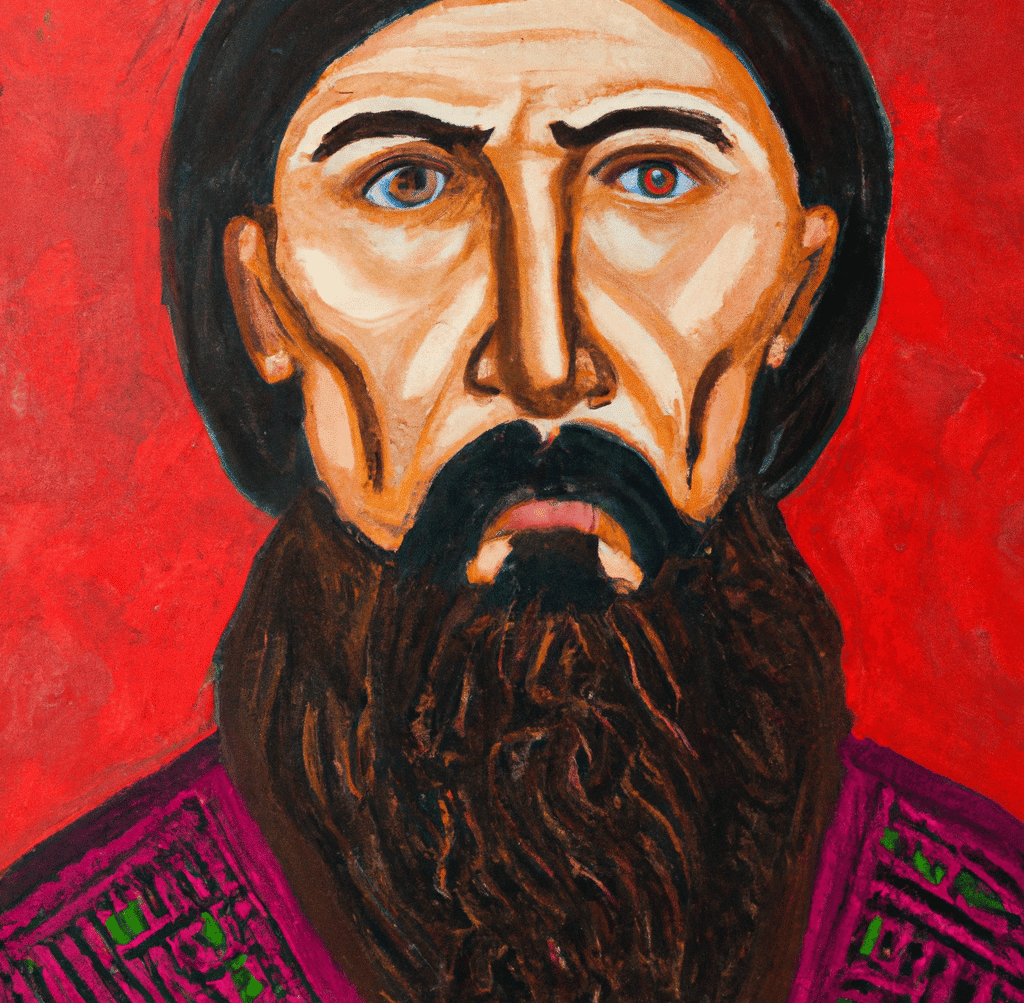The Brooklyn Bridge is a towering monument that unites the New York boroughs of Manhattan and Brooklyn across the East River. The unique cable-stayed/suspension bridge hybrid has been an iconic symbol of one the world’s grandest cities since it opened in 1883. At the same time, immigrants were flooding to NYC in search of a better life. When George Parker saw this combination, he saw one thing: Opportunity.
Meet George Parker

George Parker was born in 1860 to Irish Immigrant parents in New York City. Parker was blessed with the gift of charm. A natural salesman, he would use his charm and confidence to swindle naive and ambitious targets into hugely profitable sales – or at least profitable to him. He identified immigrants as the perfect combination of the two traits and set to work on the con that would eventually make him infamous – selling the Brooklyn Bridge.
Why the Brooklyn Bridge?

The unique usage of the Brooklyn Bridge helped spawn the idea in Parker’s mind. The Bridge’s role as the link between Manhattan and Brooklyn made it the most convenient means of pedestrian travel between the two boroughs, with thousands making the crossing daily.
At the time, passage over the bridge was not free. Tolls at the beginning of either side would charge pedestrians a penny, horse riders five cents and a horse and cart 10 cents. These toll stations would serve as the building blocks for Parker’s bridge scam.
The Scam
To pull off this scam, Parker would have to look and act the part. He would patrol the ends of the bridge, always impeccably well-dressed to give the appearance of a wealthy and accomplished businessman. Once he had selected his target, Parker would approach them and present himself as the owner of the bridge with the assistance of well-made forged documents. He wouldn’t offer to sell them the bridge right away, he would instead offer them a job operating one of the bridge’s toll booths.
Once he had his victim’s attention, he would use his charm to bait them into a “business partnership” that would allow them to co-own the toll booth. From there, he would spin his web of deception further until arriving at his ultimate goal – an offer to sell the Brooklyn Bridge itself. By offering them ownership of the bridge, he was giving them an opportunity to build the American Dream that so many of them fled their homes in search of.
Being the savvy con artist he was, Parker would adjust his asking price based on what he thought his target could spend. It’s rumored that at the height of the scheme, Parker sold the Brooklyn Bridge for $50,000, equivalent to about $1.8 million today.
Once Parker had secured the money from the bridge buyers, he would go on his way delighted by another successful scam. Meanwhile, the buyers would begin trying to recoup their return on investment, with some going as far as to set up toll booths on the bridge. Eventually, though, police would show up and shut down the non-city-owned toll booths and send the victims home empty-handed and accused of perpetrating a scam of their own.
The Scam Comes to an End

Parker’s ruse was so successful that he did it again, and again, and again. It has long been rumored that Parker would execute this plan up to twice a week, treating the Brooklyn Bridge as his own gold mine. It was this repeated execution that would eventually lead to Parker’s downfall.
As more and more people told the local police that they were the rightful owners of the bridge, they eventually noticed the pattern. To put an end to the confusion, police placed signs all around the bridge making it clear that the landmark was not for sale, putting an end to Parker’s scam.
Well, an end to his bridge scam at least. Parker would pull the same scheme on unsuspecting citizens for years, selling city sites such as Madison Square Garden, the Metropolitan Museum of Art, the Statue of Liberty, and Ulysses Grant’s tomb. He would eventually be arrested in 1908.
However, Parker’s unique skill set would prove to be useful for more than just selling landmarks he didn’t own. Following his arrest, he was able to escape the courthouse by simply donning the hat and coat of a sheriff.
It wasn’t until 1928 that Parker’s luck finally ran out when he was sentenced to serve a life term in Sing Sang Prison. He would spend the final eight years of his life there where he would regale fellow inmates and guards with tales of his various schemes.
There are few con artists throughout American history more successful or well-known than George Parker. His sales of the Brooklyn Bridge and other New York City landmarks serve as a perfect encapsulation of the lengths people will go to to achieve their American Dream, even if it means tricking somebody else out of theirs.











